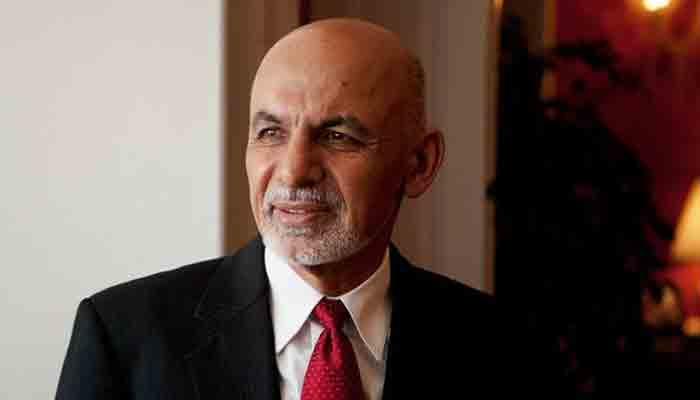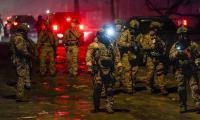Ashraf Ghani’s seven points
Although we continue to await the results of the presidential elections in Afghanistan, the incumbent, President Ashraf Ghani, continues to operate with great consistency, as he attempts to secure a stronger and more pronounced role for himself, the wider Afghan government, and other mainstream Afghan politicians, in the conversation between the US government, and the Taliban.
This dynamic, which evolved into peace talks or withdrawal talks lead by US diplomat Zalmay Khalilzad, was disrupted on September 8, when President Donald Trump cancelled a planned meeting with Afghan leaders, including the Taliban, and terminated the talks or negotiations.
As Afghan leaders, including the Taliban, mobilized this weekend in Beijing to take forward an intra-Afghan understanding for peace and stability in their country, a confidential two-page memo of a peace plan, authored under Ghani’s patronage was leaked to the Afghan press. Its content is unsurprising, but still worthy of close attention, especially by Pakistani authorities. To do so, we have to roll back in time a little bit.
For over a decade now, Pakistani officials have repeatedly disowned and disavowed the concept of ‘strategic depth’. Many observers claim that Pakistan sought strategic depth in Afghanistan, so as to be able to fall back, in operational and tactical terms, on Afghan territory, in case a conflict with India ever got to the point where such space was required. This appetite for so-called strategic depth in Afghanistan is what is used to explain Pakistan’s recognition of the Taliban regime in Kabul as its legitimate government in 1996, as well as the continued alleged support of the Taliban, by Pakistan, after the US invasion of Afghanistan in October 2001.
As a concept, strategic depth always suffered from very deep flaws, but its disutility became blindingly obvious from 2007 onwards, as the menace of terrorism metastasized from being an Afghan problem that sometimes leaked into Pakistan, to becoming a full-blown Pakistani problem, with an Afghan dimension. Pakistan had not been able to secure strategic depth in Afghanistan against India, but the global terrorist menace had somehow managed to secure strategic depth in Afghanistan, against Pakistan!
The Lal Masjid siege of July 2007, and the Shaheed Mohtarma Benazir Bhutto assassination of December 2007, only marked the beginning of this realization, and it was only seven years later (in the summer of 2014), that a comprehensive and unrelenting tactical and operational response to the TTP-led terrorist onslaught against Pakistan was initiated.
For Pakistan, the notion of strategic depth has been dead and buried for many years. But for ordinary Afghans, it is still very much alive. Every moment of tragedy that is inflicted upon Afghanistan by bombs in markets or mosques, or fidayeen attacks on government offices, or even VBIED attacks on officials, is seen by significant numbers of Afghans as an attack by Pakistan on their freedom and security.
The basis for this perception is the continued links, even though they are weaker and more tenuous than ever, between the Taliban, including the Haqqani Network, and Pakistan. Those links may not mean much in terms of what Pakistan can get the Taliban to do. But for ordinary, and especially young, Afghans they are enough to indicate that the biggest stumbling block to a peaceful and prosperous Afghanistan is Pakistan.
In Pakistan, this perception of the country is seen to be preposterous. Having had the country transformed into a killing field for the TTP and its affiliates, and having experienced dramatic demographic, political, social and economic change, emanating in part from the forty years of conflict in Afghanistan, Pakistanis are shocked at the accusations from Afghanistan. In fact, most Pakistanis tend to see accusations about seeking strategic depth, or worse, deliberately supporting terrorism in Kabul or Mazar-e-Sharif or Herat or the Nangarhar province, as being deliberate provocations.
The conversation between the two countries is a conversation between a blood-soaked people, suffering violence, conflict and corruption of such levels that the ability to see clearly across borders has been permanently damaged. Complicating and devastating any hope of a real conversation are third-party spoilers: including India, the United States, Russia and China – all of whom have either played a role in the destruction of Afghanistan to date, or seek advantage in Afghanistan in the future.
The most pertinent passage of the leaked two page memo for intra-Afghan dialogue for Pakistan is the third of the seven points, which reads:
“Point 3) Negotiations with Pakistan: Points 1 and 2 have been emphasized by the US and the Taliban but we also want to address the root of the problem and that is Pakistan.
This point will aim to provide mutual assurances between Afghanistan and Pakistan. Afghanistan needs to know that Pakistan will not continue to harbor terrorists and nurture terrorism in the region, and Pakistan needs to know that Afghanistan can be an earnest partner for trade, commerce and energy projects that can help boost Pakistan’s economy.”
Can Pakistan talk to any country or group that uses this kind of language about the country? Should Pakistan even engage with President Ghani, who despite knowing that Afghanistan continues to be a safe haven to terrorist groups that target and kill Pakistanis, adopts this kind of comprehensive and irreconcilable language about Pakistan?
These questions tend to have short answers in Pakistan, but the conversation needs to be expanded and deepened. The ‘blame Pakistan’ narrative in Kabul is not an Ashraf Ghani problem, it is an Afghan problem. Whoever is in charge in Kabul, will always lay some of the blame for Afghan ills, on Pakistan. This is a gift of geography, and a legacy of linguistic, ethnic and territorial claims and counter claims. The best leaders, civil or military, know how to tune out the noise and pick up what is important, whenever an adversary or a partner speaks. Indeed, in the 21st century, the difference between whether a party is an adversary or a partner will often depend on whether we respond to noise or to substance.
Eighty percent of point 3 of the seven-point leaked intra-Afghan dialogue memo is noise. The last sentence is the substance. President Ghani is offering an earnest partnership for trade, commerce and energy projects. That must be the focus of Pakistan’s leadership. The false accusations are being made because Lisa Curtis was in Kabul with Zalmay Khalilzad, because some friends in Kabul think that the Chinese will be as gullible as the Americans are, and because some other friends in Kabul owe India at least this much, as India’s space for mischief in Afghanistan begins to shrink. But all this is a distraction. The substance is this: Afghanistan can be an earnest partner to Pakistan for trade, commerce and energy projects.
This means a faster building of the nearly six hundred kilometers of electricity transmission lines needed for CASA-1000, it means a quicker development and deployment of the Khyber Pass Economic Corridor infrastructure, and it means a renewal of focus on projects like Tapi.
All of this, and more, in a wider strategic environment that is informed by the Pakistan-specific ongoing CPEC, the region-specific Central Asia Regional Economic Cooperation programme framework, and the global Belt and Road Initiative.
Pakistan must choose the substance over the noise. Countries and multilateral institutions are lined up as stakeholders in an Afghanistan-Pakistan partnership for the ages. Pakistan must not let the spoilers win. It must not follow the noise. It must follow the substance.
The writer is an analyst and commentator.
-
 Philippines Blocks Elon Musk’s Grok AI
Philippines Blocks Elon Musk’s Grok AI -
 Jennifer Lawrence Blames Internet For Losing Sharon Tate Role
Jennifer Lawrence Blames Internet For Losing Sharon Tate Role -
 DeepMind, Google CEOs Sync Daily To Accelerate AI Race Against OpenAI
DeepMind, Google CEOs Sync Daily To Accelerate AI Race Against OpenAI -
 Japan Launches Probe Into 'Grok AI' Following Global Scrutiny Over 'inappropriate' Content
Japan Launches Probe Into 'Grok AI' Following Global Scrutiny Over 'inappropriate' Content -
 Prince Harry All Set To Return To Britain Next Week?
Prince Harry All Set To Return To Britain Next Week? -
 Is Princess Charlotte Becoming Most Confident Young Royal?
Is Princess Charlotte Becoming Most Confident Young Royal? -
 ‘Stranger Things’ Star David Harbour Speaks Up About ‘psychotherapy’
‘Stranger Things’ Star David Harbour Speaks Up About ‘psychotherapy’ -
 Jennifer Love Hewitt Talks About Scary 9-1-1 Episode
Jennifer Love Hewitt Talks About Scary 9-1-1 Episode -
 Kate Middleton Ditches Palace Life For Where She 'truly Relaxes'
Kate Middleton Ditches Palace Life For Where She 'truly Relaxes' -
 Pixel Watch May Soon Warn You If You Leave It Behind
Pixel Watch May Soon Warn You If You Leave It Behind -
 Serious Liver Scarring Shows Potential To Be Reversed With Latest Drug
Serious Liver Scarring Shows Potential To Be Reversed With Latest Drug -
 Elon Musk Backs Donald Trump To Invoke Insurrection Act Amid Minnesota Protests
Elon Musk Backs Donald Trump To Invoke Insurrection Act Amid Minnesota Protests -
 Scientists Unravel Mystery Of James Webb’s ‘little Red Dots’ In Deep Space
Scientists Unravel Mystery Of James Webb’s ‘little Red Dots’ In Deep Space -
 Nano Banana Explained: How Google’s AI Got Its Name
Nano Banana Explained: How Google’s AI Got Its Name -
 Fire Causes Power Outage On Tokyo Train Lines, Thousands Stranded As ‘operations Halted’
Fire Causes Power Outage On Tokyo Train Lines, Thousands Stranded As ‘operations Halted’ -
 YouTube, BBC To Ink Landmark Deal To Launch Exclusive Bespoke Shows
YouTube, BBC To Ink Landmark Deal To Launch Exclusive Bespoke Shows




